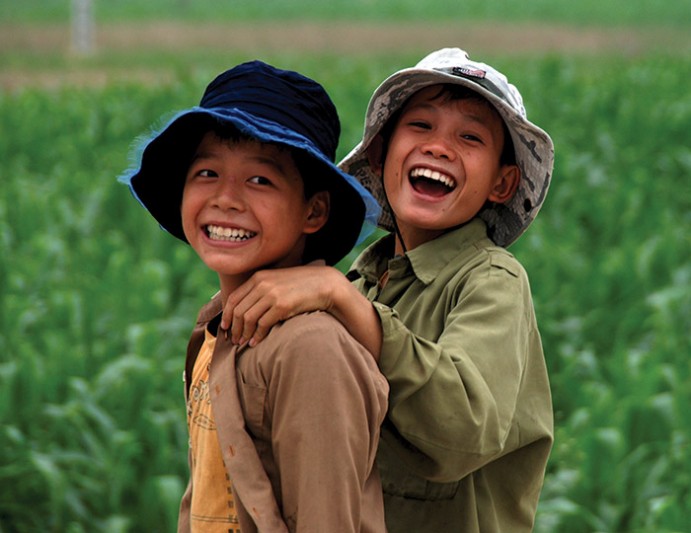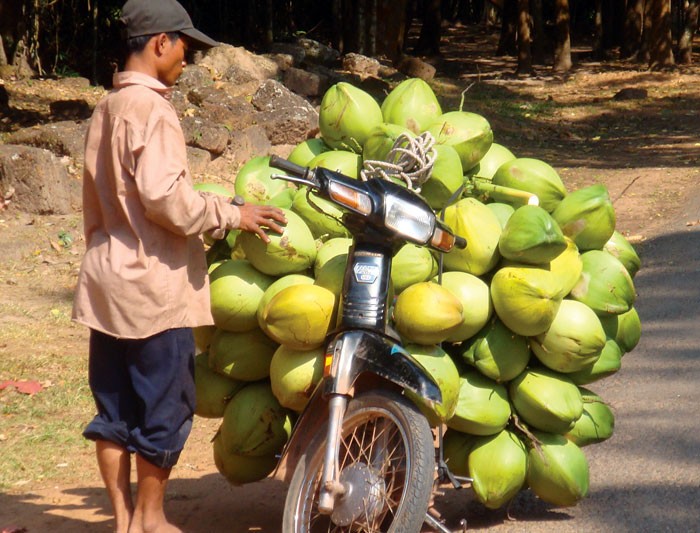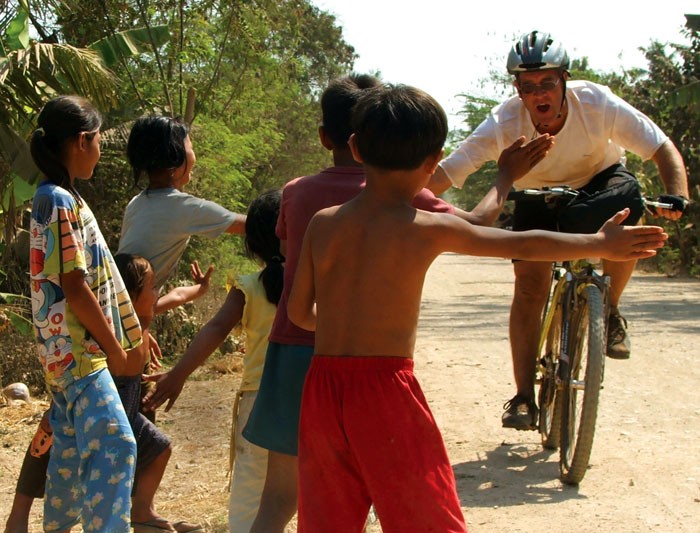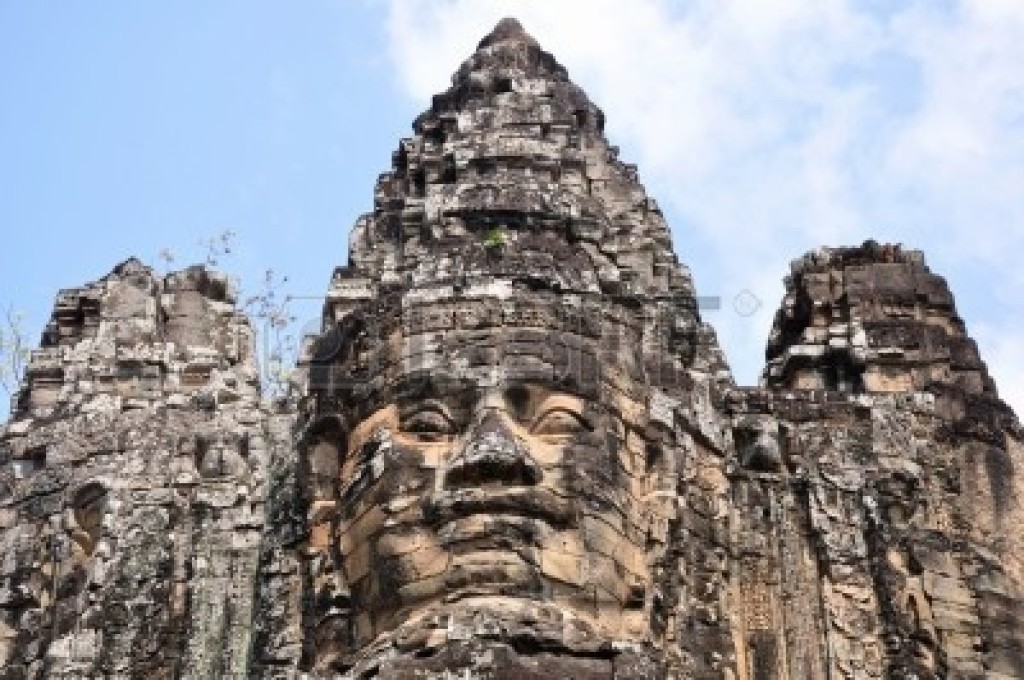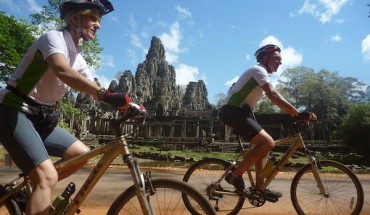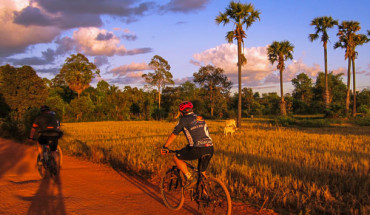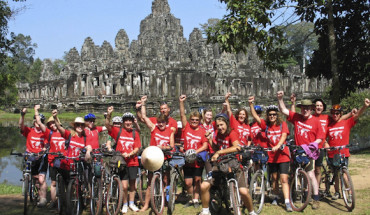Cambodia is unpredictable but that’s the allure for many travelers who come here. Traffic is chaos. Corruption is law. Poverty is endemic. Less than half of Cambodians have access to clean water and sanitation facilities. Children suffer from malnutrition and inadequate immunizations against polio, measles, and diphtheria. The political situation is uncertain. And although the good news is that years of rampant violence and anarchy are over and a stable coalition government is now in power, strong destabilizing elements remain and a powerful criminal underworld still exists which means that things are never as they seem.
The sign on the ride from the airport reads: “Abuse a child in this country, go to jail in yours, ” and speaks of multilateral participation with foreign governments to crack down on child abusers, but foreign “sexpats” and fugitives from the law still find Cambodia a nice, cozy place to crawl under the rug. Ownership is tenuous, at best, and many foreign investors have their investments just evaporate. Illegal logging of old-growth teak is still common practice, despite the best efforts of regional and international bodies.
In Cambodia you can pay to fire heavy weaponry that’s left over from the recent past of violence. It’s a place where sometimes you have to just keep dialing in the hopes of getting a phone connection that works and where everything is going to happen in “just 15 minutes, ” which inevitably stretch into hours. What brings so many here is their desire to help; humanitarian-aid workers are the majority in places like Phnom Penh, but tourists flock here also for the incredible temples of Angkor Wat and rural journeys that were too dangerous until only recently.
The situation is grim in this small agrarian kingdom, but things are improving. Following years of war, the chaos and genocide of Pol Pot’s Khmer Rouge, and a long period of civil and political instability, Cambodia was for years an armed camp, closed to foreign visitors (except maybe travelers of the danger-seeking variety). The first wave of intervention troops from the United Nations did as much to bolster vice in country as they did to establish order; armed anarchy and banditry ruled until very recent years.
Fortunately, Cambodia is now beginning to heal, and, though this process will take years, the country is enjoying a period of relative stability. Strict gun laws and more tenacious policing of offenders mean that disarming of Cambodia has sped up. Cambodia offers travelers a host of experiences from the legacy of ancient architecture to a growing urban capital and beautiful countryside. Even the shortest visit is a window into a vibrant ancient culture and a chance to meet with very kind and resilient people.
What brings so many to this Buddhist land of smiles is Angkor Wat, the ancient capital and one of the man-made wonders of the world. The temple complex at Angkor is stunning, a monumental Hindu/ Buddhist temple compound of behemoth block temples, towering spires, giant carved faces, and ornate bas-reliefs. It’s a pilgrimage point for temple aficionados and a place of spiritual significance to many seeing Angkor is a once-in-a-life- time experience. Most travelers limit their visit to a few days at the temples and major sites in the growing capital, Phnom Penh, which is tatty but charming, with crumbling French colonial architecture and a splendid palace.
Travel in rural Cambodia, once unheard of, is improving, but you still need some tolerance for bumpy roads and rustic accommodations—and getting off the track in Cambodia is a glimpse of a beguiling, unpredictable land. Cambodia is resplendent with natural gifts such as the Mekong River—the country’s lifeline that connects with Tonle Sap (Great Lake), Southeast Asia’s largest lake, surrounded by fertile lowlands.
Bouncing around the hinterlands of Cambodia still begs caution, though, and travelers should be aware of the massive amount of UXO (unexploded mines) and the absence of proper medical services. Any of the larger tour operators are a good bet for arranging trips to the likes of mountainous Rattanakiri in the northeast, the Thai border area, or rural riverside towns along the Mekong. The country’s only port, Sihanoukville, is a popular beach destination.
Known for warm, beguiling smiles that have weathered great hardship, Khmer people are very friendly, approachable, and helpful; but be warned that the hard sell is on in Cambodia, and you’re sure to be harried, especially by the persistent young sellers at Angkor Wat. Nevertheless! Travelers here are sure to meet with great kindness.
Tourism is growing in leaps and bounds. Many nongovernmental organizations (NGOs) here do their part to rebuild and support the growing nation. Their activities, centered in offices in Phnom Penh, are what keep social services and the infrastructure at subsistence levels. If you’re interested, volunteer opportunities abound and you can effect great change as a volunteer or through donations. The number of foreign aid workers means increased quality of services; hotels and restaurants in Siem Reap and Phnom Penh are on par with any in the region, although outside of these two centers, they are sparse.
If only to see the Angkor temples, the trip to Cambodia is worth it. This beguiling land that’s shaking off the shackles of a devastating recent history is an exciting, emerging tourist destination.


